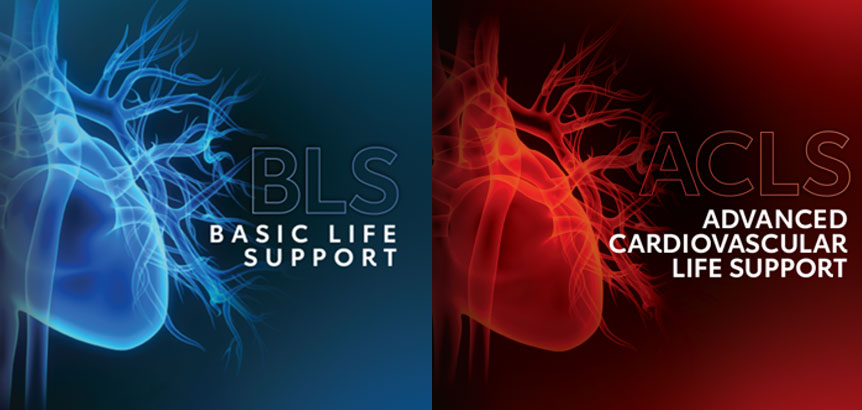Course Description
The American Heart Association (AHA) is offering Basic Life Support (BLS) and Advanced Cardiac Life Support (ACLS) courses in Bengaluru. The AHA’s BLS course trains participants to promptly recognize several life-threatening emergencies, give high-quality chest compressions, deliver appropriate ventilations and provide early use of an AED. Reflects science and education from the American Heart Association Guidelines Update for CPR and Emergency Cardiovascular Care (ECC) based on the latest guidelines.
BLS is the foundation for saving lives after cardiac arrest. The AHA’s BLS Course has been updated to reflect new science in the 2020 American Heart Association Guidelines Update for CPR and Emergency Cardiovascular Care. This video-based, Instructor-led course teaches both single-rescuer and team basic life support skills for application in both in-facility and prehospital settings.
Advanced Cardiovascular Life Support (ACLS) builds on Basic Life Support (BLS) foundation, emphasizing the importance of continuous, high-quality CPR. The hands-on instruction and simulated cases in this advanced course are designed to help enhance their skills in recognizing and intervening in cardiopulmonary arrest, immediate post-cardiac arrest, acute arrhythmia, stroke, and acute coronary syndromes. Learn to become a practiced and strong member or lead an ACLS team with this important training program.
The course is scheduled as follows:
Day 1: BLS
Day 2-3: ACLS
Course objectives
At the end of the BLS course, the students will be able to:
- Understand the importance of high-quality CPR and its impact on survival
- Application of the steps of the Chain of Survival
- Signs of someone needing CPR
- High-quality CPR skills acquisition for adults, children, and infants
- Importance of early use of an AED
- AED skill demonstration
- Effective ventilations with a barrier device
- Multi-rescuer resuscitation and skill acquisition
- Techniques for relief of foreign-body airway obstruction (choking) for adults, children, and infants
At the end of the ACLS course, the students will be able to:
- Apply the BLS, Primary, and Secondary Assessments sequence for a systematic evaluation of adult patients
- Perform prompt, high-quality BLS, including prioritizing early chest compressions and integrating early automated external defibrillator (AED) use
- Recognize and perform early management of respiratory arrest
- Discuss early recognition and management of ACS and stroke, including appropriate disposition
- Recognize and perform early management of bradyarrhythmias and tachyarrhythmias that may result in cardiac arrest or complicate resuscitation outcome
- Recognize and perform early management of cardiac arrest until termination of resuscitation or transfer of care, including immediate post-cardiac arrest care
- Model effective communication as a member or leader of a high-performance team
- Evaluate resuscitative efforts during a cardiac arrest through continuous assessment of CPR quality, monitoring the patient’s physiologic response, and delivering real-time feedback to the team
- Recognize the impact of team dynamics on overall team performance
- Discuss how the use of a rapid response team or medical emergency team may improve patient outcomes
- Define systems of care
Target Audience
- Doctors
- Paramedics
- Nurses
Course Completion Card Type
American Heart Association BLS and ACLS courses completion card, valid for 2 years
